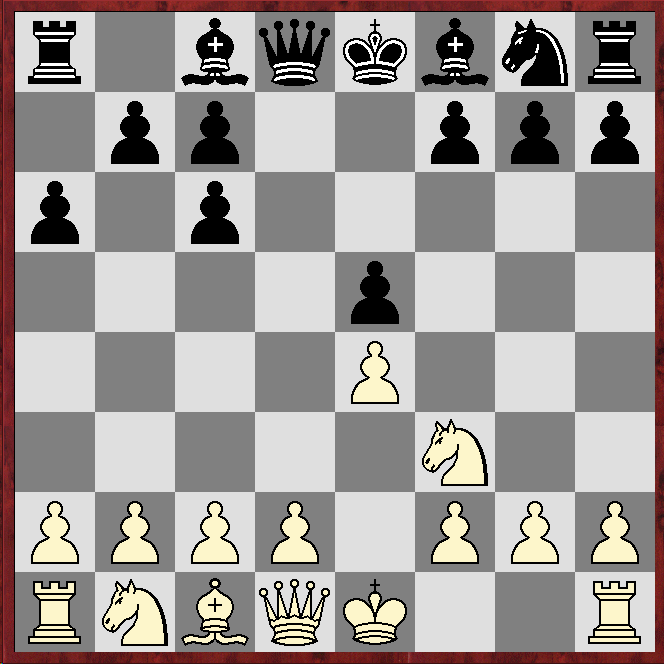The bishop-pair is often worth even more in open positions, especially endings with rival pawn-majorities.
It can be worth a lot less in middlegames with plenty of pawns, especially if the opponent has an advantage in space in the centre.
The value of half a pawn on average was calculated by international master Larry Kaufman, using a computer database, and explained in The Evaluation Of Material Imbalances, which was, I believe, originally written for the US magazine Chess Life.
It is interesting however that in what is arguably the most famous opening of them all, the Spanish or Ruy Lopez, there are well-known examples where White happily concedes the bishop-pair.
Most famous is the Exchange Variation, popularised first by Emanuel Lasker and later by Bobby Fischer: 1.e4 d5 2.Nf3 Nc6 3.Bb5 a6 4.Bxc6.
Black usually recaptures with 4...dxc6, giving the following position.
 |
| White's thematic plan is to at some point get in d4 to create a healthy 4-3 kingside majority, while Black will have a damaged 4-3 queenside majority |
 |
| White has the healthier pawn-majority and has deprived Black of castling rights, but the king's pawn is less secure on e5 than on e4, and allows Black useful play on the light squares |
The game began 1.e4 e5 2.Nf3 Nc6 3.Bb5 Nf6 4.d3 Bc5, and here my opponent captured on c6 unprovoked.
 |
| Position after 5.Bxc6 dxc6 |
I find it hard to explain what White gets for giving up the bishop-pair.
Indeed, in The Berlin Defence by Igor Lysyj & Roman Ovetchkin (Chess Stars, 2012), the authors write: "White's last move seems to be completely harmless, since he presents voluntarily his opponent with the two-bishop advantage."
But they add: "The fact that numerous outstanding grandmasters have tried it indicates that Black faces problems, which are hardly so simple. There arises a middlegame with long positional manoeuvring and a very complicated fight."
In the book they look in some detail at 6.Nc3, 6.h3, 6.0-0 and 6.Be3.
My opponent preferred 6.Nbd2, which is easily the main move in Mega23.
I am still not sure what White achieves by the unprovoked capture, but its popularity among the elite proves it is playable, and confirms chess is a deep and apparently inexhaustible game.
No comments:
Post a Comment